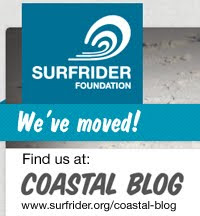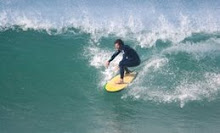
Nicolas Corne recently published an interesting paper entitled, "The Implications of Coastal Protection and Development on Surfing" in the Journal of Coastal Research (reference and link below).
The paper is noteworthy because it is one of the only attempts to quantify if coastal structures (groins, jetties, seawalls, breakwaters) are good or bad for surfing. This is common topic of debate within the Surfrider Foundation because we typically fight against coastal structures because they tend to alter coastal process, harm beaches and can destroy surf spots. On the other hand we are aware that many surfing areas are the result of shoreline structures (many of which have still have other negative consequences). This is especially true on the East Coast of the US where there are few natural reefs to make surf spots.
Not too surprisingly this paper finds that coastal protection structures do both, but with the bad out weighing the good for the projects analyzed. Here are some of the other notable elements of the paper.
- Because physically measuring the physical features of a surfing wave is extremely challenging (here is one attempt at Pleasure Point in Santa Cruz), Corne relies on user surveys to guage perceptions on the change in quality and crowds.
- It was found that crowds decreased when wave quality decreased as expected, but surprisingly there were no cases were it was reported that the crowd increased when the surf improved. As suggested this has a lot to do with the proximity of substitute sites.
- The results show that seawalls, emergent break waters and beach fill tend to reduce wave quality, where as jetties tended to improve wave quality. The "other categorey and "combo" projects showed mixed results.
This paper had a number of short comings that challenge its validity that put it at risk of being a formalization of surfing anecdotes.
- The survey frame is largely Surfrider Foundation members who may have a bias against shoreline structures that is reflective of the organization's beach preservation policy.
- The paper doesn't say how many people were surveyed so its impossible to know if the responses are based on one persons opinion or if the results had a wide variation in responses (error bars)
- The survey asks questions about some places that were altered 10 to 15 years ago (e.g the Wedge in Newport Beach) and it begs the question whether survey respondents are able to truly recall changes in surf quality or if crowds have changed for reasons other than wave quality (the author does acknowledge this shortcoming).
Attendance data at surf spots is essential information to better understand the economics, protection and management of surfing areas but has proven difficult to find.
Reference:
CORNE, N.P., 2009. The implications of coastal protection and development on surfing. Journal of Coastal Research, 25(2), 427–434. West Palm Beach (Florida), ISSN 0749-0208.
Download it here.
Thanks to Linwood Pendleton from the Coastal Ocean Values Center for his comments on this post.




